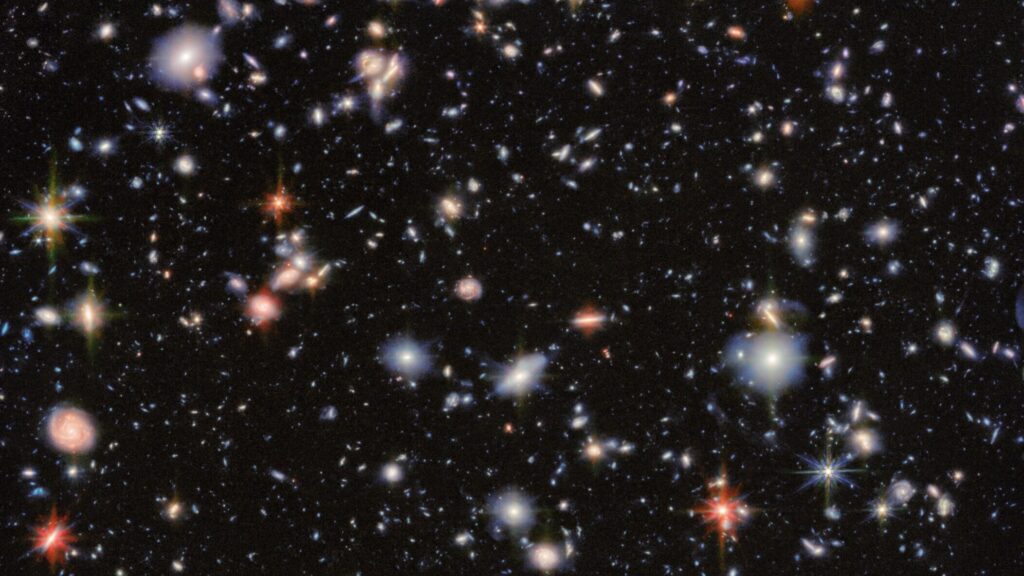
A recent study using the James Webb Space Telescope has significantly revised the estimated ages and distances of several ancient galaxies, revealing that they are much older and farther away than previously believed. The findings, published in the journal Astronomy & Astrophysics, stem from a detailed survey of a region of the sky previously examined by the Hubble Space Telescope over 20 years ago.
The project, known as the MIRI Deep Imaging Survey (MIDIS), utilized Webb’s mid-infrared instrument to penetrate light wavelengths that are not visible to the naked eye. This innovative approach allows astronomers to observe the faint infrared emissions from ancient stars and their structures, providing unprecedented insights into the early universe.
Unveiling Cosmic History
The MIDIS project concentrated on a portion of the sky captured in Hubble’s ultra-deep field image, a feat achieved through 100 hours of observation, including 41 hours using a specific filter. The resulting images revealed nearly 2,500 light sources, most of which are distant galaxies. Notably, around 1,000 of these galaxies now have revised distance estimates due to the light’s redshift, a phenomenon caused by the universe’s expansion.
The research captures a pivotal period known as the “cosmic dawn,” occurring between 100 million to 1 billion years after the Big Bang. During this time, the universe was still in its infancy, merely a few hundred million years old. As light travels across vast distances, it gets stretched, leading to a shift towards longer wavelengths. Webb’s ability to detect these infrared waves allows it to see through the gas and dust that often obscure distant cosmic objects.
One significant discovery from the study involved a galaxy that was initially estimated to be 11.8 billion years old. Further analysis revealed it to be approximately 13.3 billion years old, indicating its formation occurred when the universe was only around 450 million years old. This positions the galaxy among the earliest structures formed in the cosmos.
Implications for Cosmic Research
The findings underscore Webb’s potential to identify misidentified ancient galaxies, surpassing the capabilities of previous instruments, including NASA’s retired Spitzer Space Telescope. The MIDIS study also highlighted various red galaxies, which may appear red due to their dust content or the presence of cooler, older stars.
The authors of the study expressed optimism regarding the results, stating, “MIDIS surpasses preflight expectations.” They emphasized the high potential of deep MIRI imaging to further characterize the galaxy population from cosmic noon to dawn. As researchers continue to explore the universe’s evolution, the implications of this study could lead to a deeper understanding of how the first galaxies formed and the conditions of the early universe.
In summary, the James Webb Space Telescope has provided groundbreaking insights that are reshaping our understanding of cosmic history and the early ages of galaxies, enhancing the narrative of how the universe evolved from its beginnings to the rich tapestry of galaxies we observe today.






